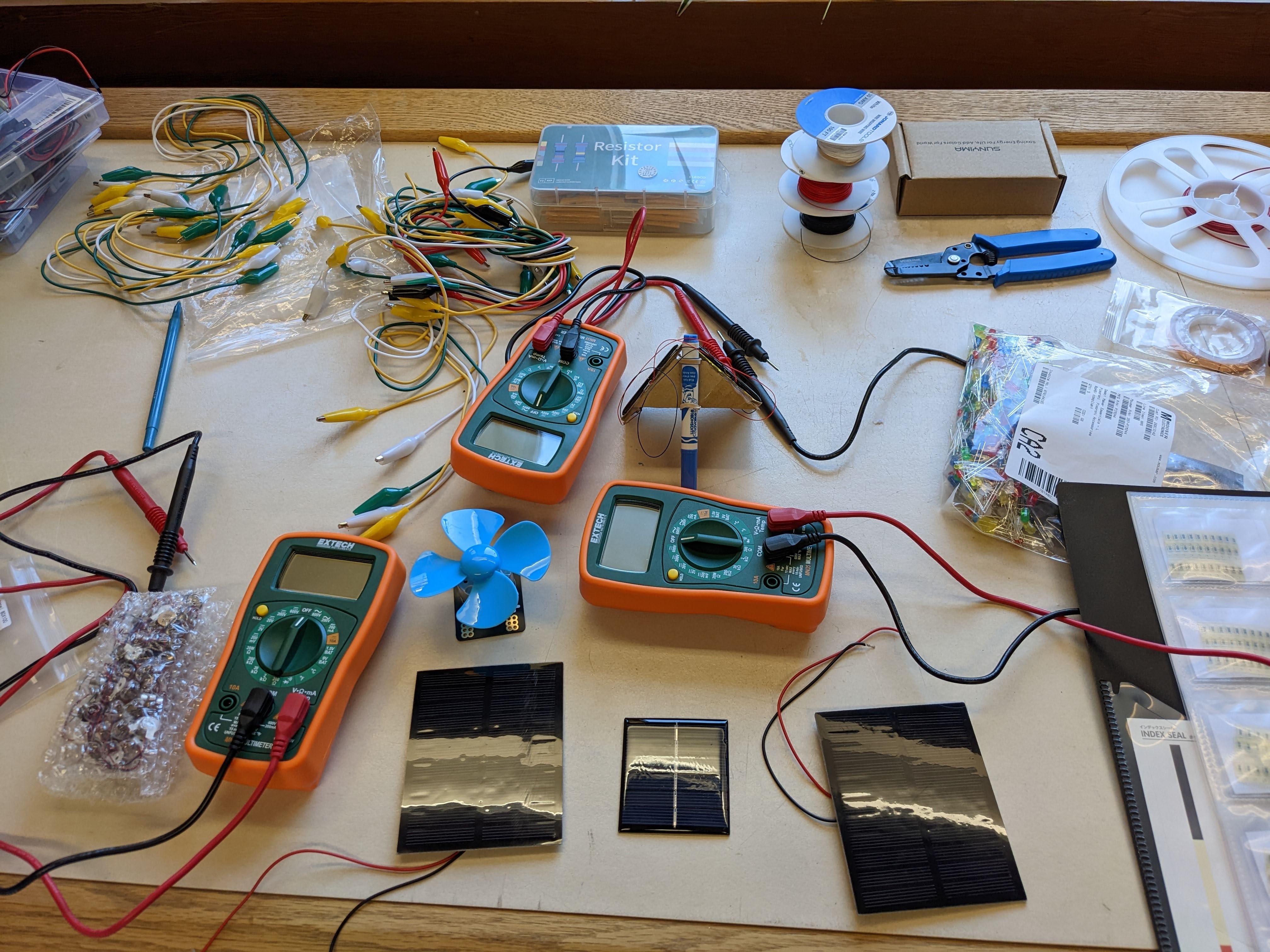
The Critical Climate Tech Initiative is a stream within EMM Lab that explores what the future of climate politics might look and feel like. EMM Lab is currently exploring three such experiments: our Carbon Drawbot , a Solar-Powered Pleroma server, and a Desktop CO2 removal device .
The Critical Climate Tech Initiative at the Experimental Methods and Media (EMM) Lab presents a new way to study the speculative technical arrangements that are integral to the climate scenarios modeled for the end of the century, but which are not yet part of present public imaginaries about the future. By using research-creation and critical making methods to create accessibly-scaled versions of 100% solar energy and carbon removal systems, EMM Lab will explore the material and aesthetic dimensions of these technologies and study public responses to them. We hope to further produce project kits that can be shared with sister labs/allied researchers and climate justice groups around the world to better compare how these questions of maker-practices and social perceptions shift across disciplinary and geographic contexts. The initiative thus aims to contribute to a wider understanding of the ambiguous politics of climate tech as well as experimental research methods for studying speculative technologies.
If climate models are to be believed, the future will look dramatically, almost incomprehensibly different. In the mitigation scenarios described by the IPCC, corporate net zero plans, and national climate goals, the world has been dramatically reformed by the end of the century. The electrical grid has shifted to a predominance of renewable, intermittent sources. This decarbonizes our energy system, but also significantly changes how we relate to energy as the movements of sun and wind create ebbs and flows between periods abundance and scarcity. We don’t yet know how we’ll adapt to this dynamism. A revolution in battery technologies or an abundance of smart sensors may help us maintain something of the stability of our old fossil fuel grids, or it may be that we have to develop a fundamentally different relationship to energy, adapting our use patterns to the peaks and valleys of environmental forces. For those parts of modern life that can’t be electrified, negative emissions technologies will step up to capture and remove remaining carbon emissions. The exact character of these carbon removal technologies isn’t yet clear, but will likely involve massive industrial air scrubbers, taking CO2 out of the air and thus out of the climate system. Where the sequestered carbon will go, and how we will power and place these systems, is not yet fully known. In order to make the climate math work, however, we know that they’ll need to scale up to the size of the current fossil fuel industry, only working in reverse.
There are obvious gaps between these future scenarios and present-day conditions. These are, in part, technical: policy papers and engineering efforts have almost entirely focused on resolving tensions and uncertainties around economic incentives and material chemistries, while sociologists and planners have explored the hypothetical geographies and economies of new energy markets, should these ambitions come to pass . Political will is a further barrier; it’s not clear how divisive or expensive climate actions can win strong public support, or survive reactionary responses.
Yet, despite this flurry of research, an even more fundamental gap lies with the public imagination. The complexities of energy transitions and carbon removal technologies are considerable and poorly communicated to the public by news media and our education systems. As a result, publics largely do not know what these intended futures will look or feel like, nor the fundamental challenges yet to be resolved in materializing these modeled scenarios.
Such gaps are traditionally approached as knowledge deficits, diagnosed through focus group or survey research, and hopefully remedied through future educational campaigns and careful science communication. The politics of this knowledge deficit approach, however, have been significantly critiqued in recent decades for the ways that it generally presumes a value-free presentation of information and a context-independent metabolization of the news. Simply providing technical information, even in accessible formats, won’t be enough to catalyze meaningful deliberations.
Instead, questions of energy and climate connect to much deeper cultural norms and values. Scholarship in the energy and environmental humanities highlights how green transitions have significant implications for the aesthetic and affective dimensions of everyday experience and cultural forms, and that the elision of these concerns within traditional climate politics and communications forecloses a wider range of emotional and aesthetic strategies for evaluating these proposals. There is thus an identified need to expand how climate futures are made available to public debate and imagination, and to study the ways that more-than-discursive strategies are conducive to both knowledge-creation and social deliberation.
EMM Lab's Critical Climate Tech Inititative aims to intervene in this gap through creative means. Using a combination of research-creation and critical making strategies, it will stage opportunities for researcher and public engagements with key technologies and social arrangements at the core of our modelled climate futures. Mindful of the limitations of a knowledge deficit approach, its aim is not to merely inform audiences of the technical conditions described in global climate response plans, but to stage opportunities in which they can be sensed, experienced, discussed, and reconfigured. It argues that these sensory and aesthetic dimensions are an essential and largely missing part of the politics and publics of a net zero future.
